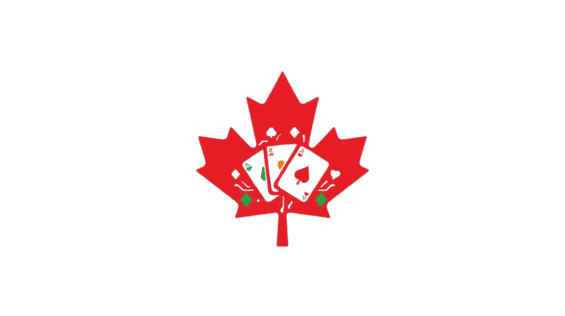Are New Casinos Reshaping Canada’s iGaming Market?

Canada’s iGaming market is in a period of rapid change. The industry has seen an explosion of activity since Ontario opened its doors to private online casino operators in 2022. This change has shifted how players gamble, how companies compete, and how governments regulate. The question many are asking is simple: Are new casinos really reshaping Canada’s iGaming market, or is this just noise around existing trends?
At Casinoble, we track these developments closely. Our goal is to help players, operators, and regulators understand the changing landscape. By looking at real data and market shifts, we provide insights into where the Canadian iGaming market is heading.
To answer this, we need to explore what is currently happening across Canada’s iGaming landscape. We must look at the role of new casinos, the measurable impact they are having, and what these shifts mean for the future of gambling in Canada. Only then can we see if the changes are cosmetic or truly transformative.
What is happening

Several major forces are shaping Canada’s iGaming industry in 2024–2025. These changes cover regulation, competition, player demand, and government oversight.

Regulatory shifts
Ontario became the first province to launch a regulated private-operator iGaming market in April 2022. This was a landmark move because, before this, Canadian players mostly had access only to government-run lottery websites or grey-market offshore casinos. Ontario’s decision gave private operators the chance to apply for licenses, open online casinos, and compete legally.
The model has been closely watched by other provinces. Alberta, for example, passed Bill 16 (Red Tape Reduction Statutes Amendment Act) in late 2024, which cleared a path to open its own regulated iGaming market by 2025 or 2026. The success of Ontario has created a domino effect, and it is now expected that more provinces will eventually follow this route.
Market size and growth
The numbers show clear momentum. In January 2025 alone, Ontario reported wagers of CA$7.84 billion across casino games, sports betting, and poker. This represented a 31% increase compared to the same month in 2024. These figures reveal not only the popularity of iGaming but also the trust players are placing in regulated platforms.
On a national scale, iGaming revenue in Canada is projected to hit CAD 5.55 billion in 2025. This makes Canada one of the most important iGaming markets in North America, trailing only the United States in size.
Operator competition and new entrants
The opening of Ontario’s market has encouraged dozens of licensed operators to set up shop. Many are international names with established reputations in Europe or the U.S. Others are local startups aiming to carve out space in a highly competitive environment. The increased competition has forced both established and new casinos to raise their game, offering more variety, better interfaces, and attractive bonuses.
Player preferences and technology trends
Today’s Canadian players demand more than just digital slot machines. They expect immersive live-dealer experiences, responsive mobile platforms, quick and secure payment options, and responsible gaming tools such as self-exclusion and deposit limits. New casinos are often faster at meeting these demands because they are built with modern infrastructure and fewer legacy systems.
The rise of mobile gaming is especially important. More than half of players now gamble on mobile devices, and new casinos are prioritizing mobile-first designs. Payment innovations such as instant bank transfers, Interac, and e-wallets are also standard expectations.
Advertising and responsible gaming
Competition has also raised the stakes in marketing. In Ontario, regulators have banned the use of celebrities and athletes in gambling ads to protect young audiences. Federal lawmakers have debated bills like S-269, which would bring stricter controls on gambling advertising at the national level. Regulators want to encourage growth while also ensuring gambling remains safe and sustainable.
Grey-market vs regulated market
Before regulation, most Canadians played on offshore sites. These sites are still accessible, and in provinces without regulated private markets, they continue to draw customers. However, players are increasingly migrating to regulated casinos because of trust, payment safety, and consumer protections.

Are they doing it?

So, are these new casinos really reshaping Canada’s iGaming market? The evidence suggests that the answer is yes.
Revenue and market scale
Ontario’s licensed casinos have significantly expanded the size of the market. The billions in wagers and the year-on-year revenue growth prove that legal, regulated platforms are winning market share from grey operators. The impact is measurable and continuing to rise.
Player migration and trust
One of the most noticeable effects has been the shift of players from offshore casinos to licensed platforms. Trust and safety are critical in gambling. Players know that licensed casinos are accountable to provincial regulators. Dispute mechanisms, deposit protections, and strict fairness audits make the experience safer. New casinos that emphasize security and transparency are seeing higher adoption rates.
Competition and product innovation
With dozens of licensed operators in Ontario alone, competition is fierce. This forces casinos to innovate quickly. Many have introduced features such as gamified loyalty systems, localized Canadian content, and new live-dealer variations. Offshore operators that fail to adapt are losing ground.
Regulatory leadership
Ontario’s iGaming market is becoming a model for other provinces. Its success has pushed Alberta to fast-track its own plans. If Ontario continues to grow steadily, it will likely become the framework on which future provincial markets are built.
Technology and user experience
New casinos are leading the way in adopting modern tech. Mobile optimization, seamless payments, and social-gaming elements are becoming standard. Innovations such as VR slots or blockchain-based payment solutions are also being tested. These advances are reshaping how players interact with casinos.
The limits of reshaping
That said, the changes are not nationwide yet. Many provinces still rely on government-run monopoly models. Offshore sites continue to attract players looking for anonymity or large bonuses. Regulations are still uneven and evolving. The reshaping is real, but it is uneven across Canada.
What does this mean for the future
Looking ahead, several outcomes seem likely:

More provinces will regulate
Alberta is next, and other provinces will eventually follow. The success of Ontario makes it harder for others to ignore the economic and consumer safety benefits.
Higher standards for operators
As competition grows, players will demand more. Operators will need to invest in fast payments, transparent bonuses, responsive customer service, and clear responsible-gaming tools. Only casinos that meet these standards will thrive.
Technological innovation intensifies
Expect the integration of augmented reality and virtual reality experiences, more personalized gameplay, and further improvements in mobile design. Players are likely to see hybrid formats that mix social gaming with real-money play.
Tighter advertising rules
Advertising will be under increased scrutiny. Expect stricter rules on language, imagery, and the targeting of vulnerable groups. Responsible marketing will become a key part of regulatory frameworks.
Revenue and taxation
Provinces stand to benefit from significant tax income. These revenues can fund healthcare, education, and public services. At the same time, governments must balance the desire for income with the need to protect vulnerable players.
Grey market persists
Offshore casinos are unlikely to disappear entirely. They will continue to attract some players, particularly in unregulated provinces. But as more local markets open, the grey market will shrink.
Risks to manage
The industry faces risks such as market oversaturation, problem gambling, and regulatory missteps. If regulators or operators fail to strike the right balance, growth could slow or face public backlash.

Conclusion
New casinos are not just filling space in Canada’s iGaming market — they are actively reshaping it. They are driving higher revenues, encouraging innovation, shifting players toward safer platforms, and forcing regulators to adapt. Ontario has become a test case for the rest of the country, and Alberta is preparing to follow. Within the next decade, more provinces will likely join.
At Casinoble, we believe these changes signal a new era for Canadian players. The iGaming sector is becoming more competitive, more innovative, and more responsible. Our mission is to provide transparent insights, reviews, and guides so players can make informed choices in this evolving market.
So, are new casinos reshaping Canada’s iGaming market? Yes — the transformation is underway, and its full effects are only just beginning to be seen.
Most Recent News
Get the latest information







